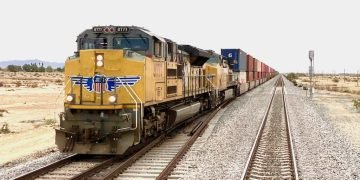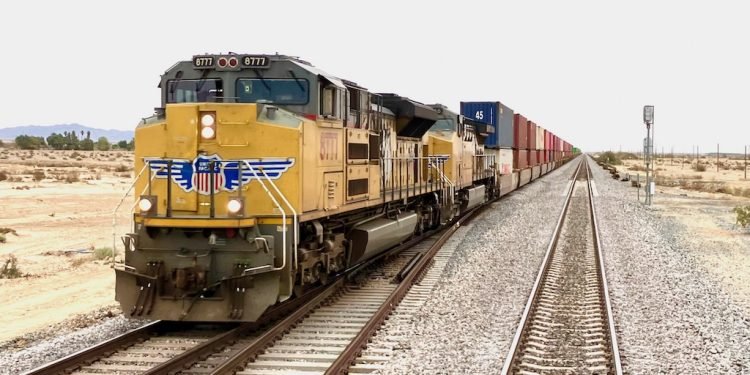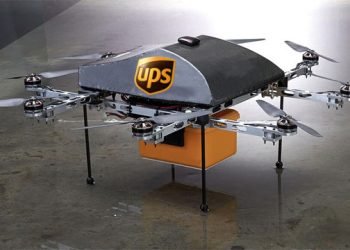By Maria Kalamatas | May 7, 2025
Chicago, USA —
As U.S. import volumes rebound sharply in early 2025, the country’s rail freight system is buckling under a renewed intermodal surge, exposing the vulnerabilities of an aging infrastructure and strained cross-terminal coordination.
According to the Association of American Railroads (AAR), intermodal rail traffic jumped 11.3% year-on-year in Q1—driven by restocking demand, nearshoring from Mexico, and coastal port diversions from the West Coast to the Gulf and East.
But the speed of the surge has outpaced investment.
“Right now, we have more containers than track space,” said Ron Peterson, Senior Director of Rail Strategy at InlandGate Logistics. “What’s missing isn’t just capacity—it’s coordination.”
Chicago, again, becomes the choke point
Chicago’s rail yards—long considered the crossroads of American freight—are now the epicenter of the bottleneck. Dwell times in key intermodal terminals such as Cicero and Bedford Park have exceeded 5.7 days on average, nearly double the pre-pandemic norm.
“Every day of delay adds cost, weakens shelf availability, and throws off delivery promises,” said Elaine Carter, Retail Logistics Lead at CosmoChain, a national distributor of electronics and home goods.
Class I railroads face criticism over service model
Critics argue that the industry’s heavy reliance on Precision Scheduled Railroading (PSR) has stripped networks of flexibility. With reduced headcounts and leaner service patterns, railroads are now struggling to handle volume swings.
“We streamlined ourselves into a corner,” admitted one anonymous executive at a Class I railroad. “Now we’re trying to scale without the labor force or siding availability to support it.”
Shippers pivot to short-line partnerships and hybrid models
Faced with unpredictable transits, some freight forwarders are opting for rail-truck hybrid models and forging direct partnerships with short-line operators to bypass congested corridors.
In Texas, CargoLink Logistics has launched a cross-dock system in Laredo to offload containers directly onto regional rail—cutting reliance on traditional hubs.
“It’s not perfect, but it’s better than waiting in a queue in Chicago,” said Pablo Rojas, CargoLink’s Head of Intermodal Services.
Policy change ahead?
There is increasing pressure on the U.S. Department of Transportation to fast-track rail infrastructure funding under the Bipartisan Infrastructure Law, especially for chokepoints in Illinois, New Jersey, and Georgia.
“Growth is great—but without a freight modernization strategy, we’re accelerating toward gridlock,” warned Professor Lila Morgan, transport economist at the University of Minnesota.























